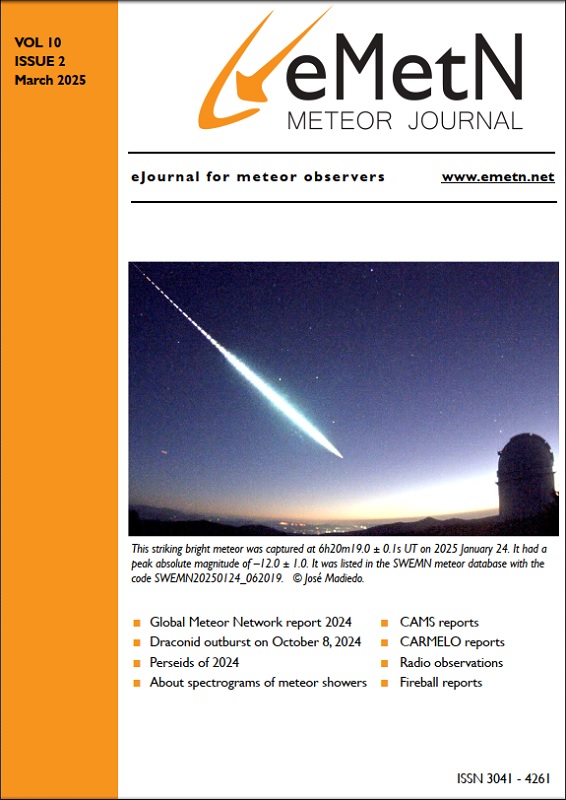Ivan Sergei
Mira Str.40-2, 222307, Molodechno, Belarus
astroseriv@yandex.by
The results of radio meteor observations at 88.58 MHz recorded from February 2024 to January 2025 are presented in this report.
1 Introduction
The observations were carried out at a private astronomical observatory near the town of Molodechno (Belarus) at the place of Polyani. A 5 element-antenna directed to the west was used, a FM-receiver (TECSUN-310) was connected to a laptop with as processor an Intel Atom CPU N2600 (1.6 GHz). The software to detect signals is Metan (author – Carol from Poland). Observations are made on the operating frequency 88.58 MHz (the FM radio station near Paris broadcasts on this frequency). The “France Culture” radio broadcast transmitter (100 kW) I use is at about 1550 km from my observatory which has been renewed in 1997. The method of listening to a radiophone is more “sensitive” in terms of detecting meteor signals compared to the method of automatic detection, so it is more interesting. Regular (daily) observations 3–5 times a day are of scientific value, because they have uniformity, as performed on the same equipment.
2 Listening to radio echoes on 88.58 MHz
In order to save observation time and to increase the efficiency of listening for the radio meteor echoes in order to obtain a more complete observation series, I made a modification to the method with the introduction of a definition of “synthetic” hourly rate numbers (Figures 1–12).
Listening for the radio signals during 10 minutes with extrapolation of the data to 1 hour was done about 3 to 5 times a day. At the times of the maxima of the main meteoroid streams, the counting of meteor echoes was performed on average every 2–3 hours in order to get a better coverage of the observational series. This was done in order to control the level of the hourly rates as well as to distinguish between periods of tropospheric passage and other natural radio interference.
February is a rather quiet month in terms of activity level with an average of about 30 signals per hour.
The graph for March resembles a blurred sine wave with peak activity around March 11–14. This may be related to the activity of the Virginids complex.
The peak of the Lyrid (LYR, #0006) activity was recorded around 7h UT on April 22 at 120 signals per hour. However, there is no confirmation of this observation in the following hours. The most realistic peak shower activity is between 05h–11h UT on April 22 at 90–96 signals per hour.
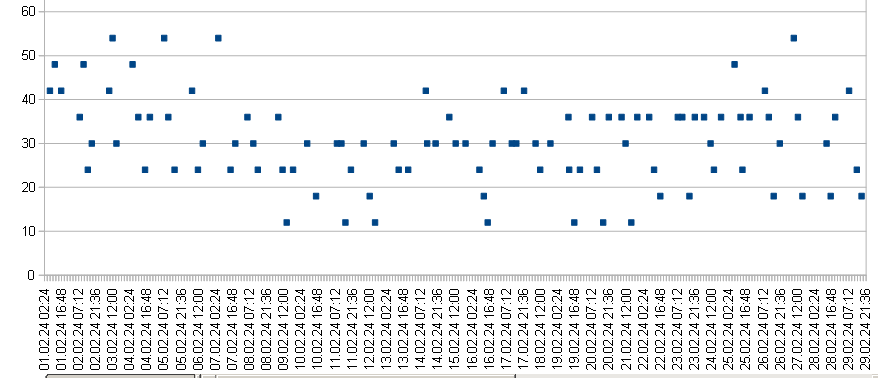
Figure 1 – The result with the calculated hourly numbers of meteor echoes by listening to the radio signals during February 2024.
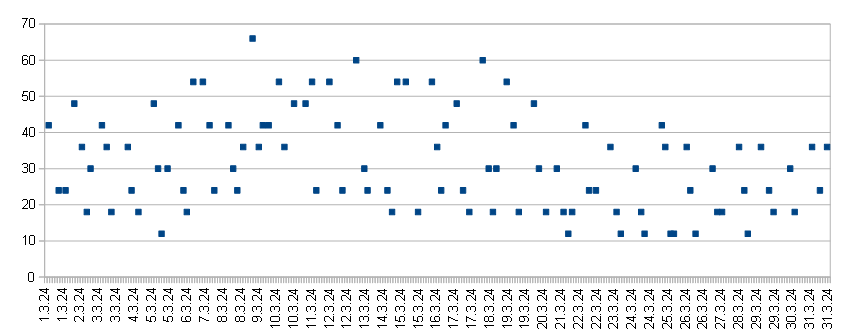
Figure 2 – The result with the calculated hourly numbers of meteor echoes by listening to the radio signals during Mart 2024.
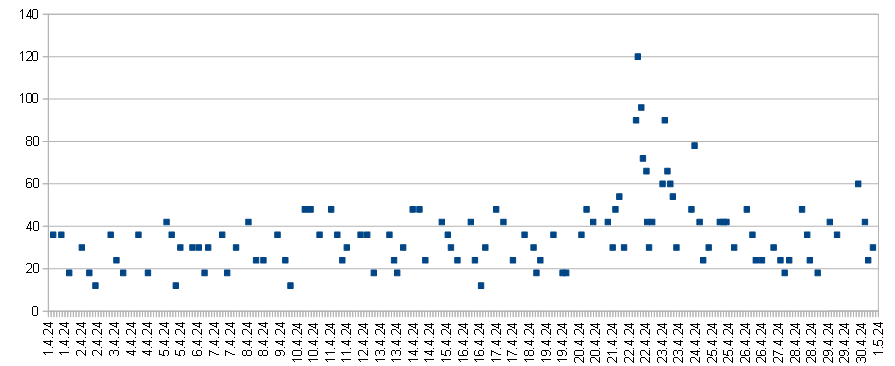
Figure 3 – The result with the calculated hourly numbers of meteor echoes by listening to the radio signals during April 2024.
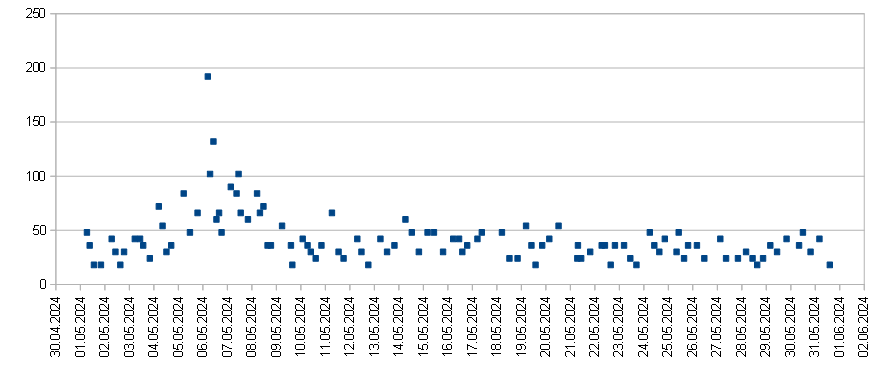
Figure 4 – The result with the calculated hourly numbers of meteor echoes by listening to the radio signals during May 2024.
The peak of the eta-Aquariids (ETA, #0031) is quite broad. In spite of separately dropped points from the graph with activity of 130–190 signals, which are not confirmed in the nearby subsequent hours, the activity at the level of about 100 signals in the period from May 06, 06h UT to May 07, 11h UT can be considered the most real.
The peak of the Daytime Arietids (ARI, #00171) is seen in early June, around June 7. Apparently, the maximum level of 80 signals per hour can be considered real, while higher activity can be a superposition of the activity of several minor showers. The peak of the daily ZPE meteor shower (#0172) is not prominent on June 10, but it could occur earlier and roughly coincide with the ARI peak.
July is a fairly quiet month with average hourly signals at around 25–30 through July 20. From about July 20 onwards, an increase in meteor signal activity is clearly visible, which is probably due to the Earth crossing the Perseid meteoroid stream orbit.
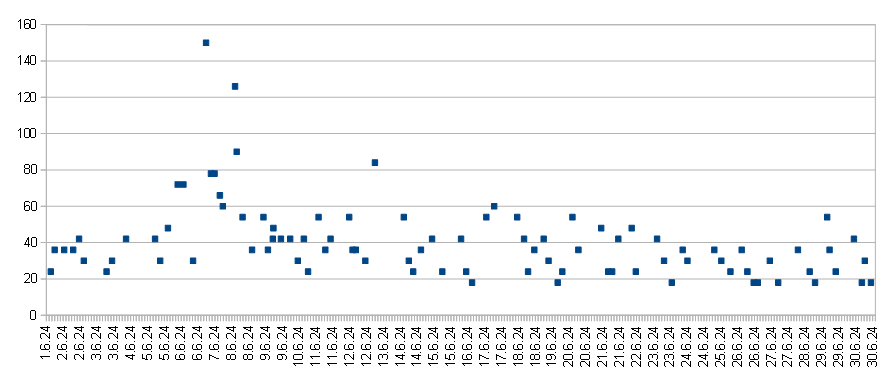
Figure 5 – The result with the calculated hourly numbers of meteor echoes by listening to the radio signals during June 2024.
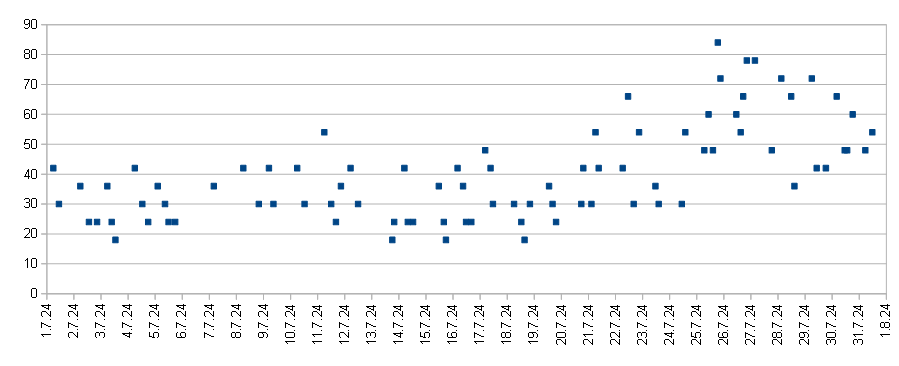
Figure 6 – The result with the calculated hourly numbers of meteor echoes by listening to the radio signals during Jule 2024.
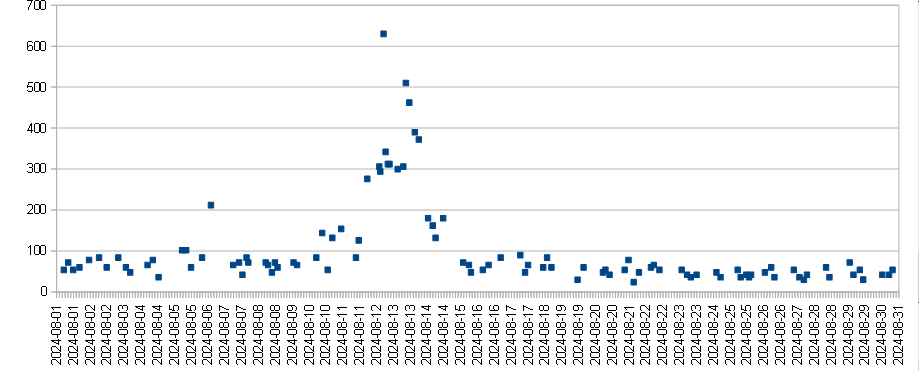
Figure 7 – The result with the calculated hourly numbers of meteor echoes by listening to the radio signals during August 2024.
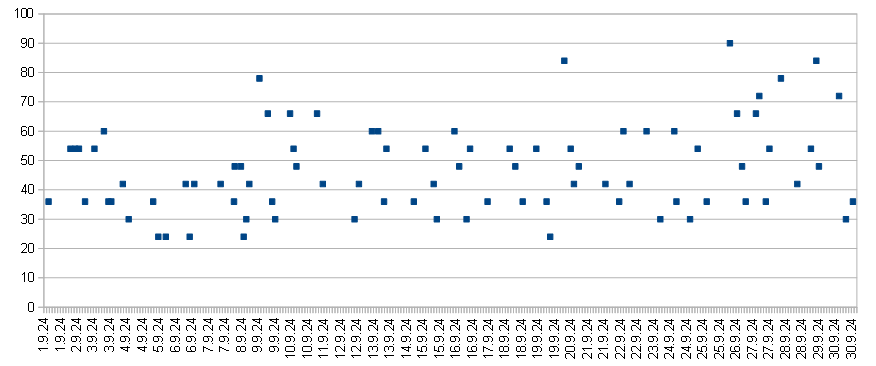
Figure 8 – The result with the calculated hourly numbers of meteor echoes by listening to the radio signals during September 2024.
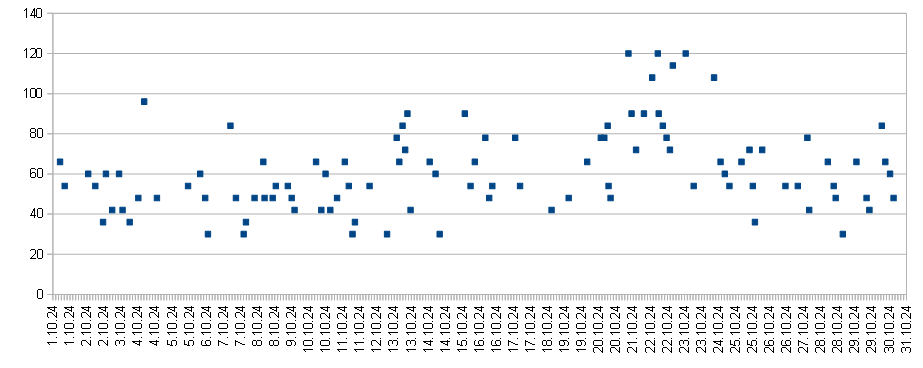
Figure 9 – The result with the calculated hourly numbers of meteor echoes by listening to the radio signals during October 2024.
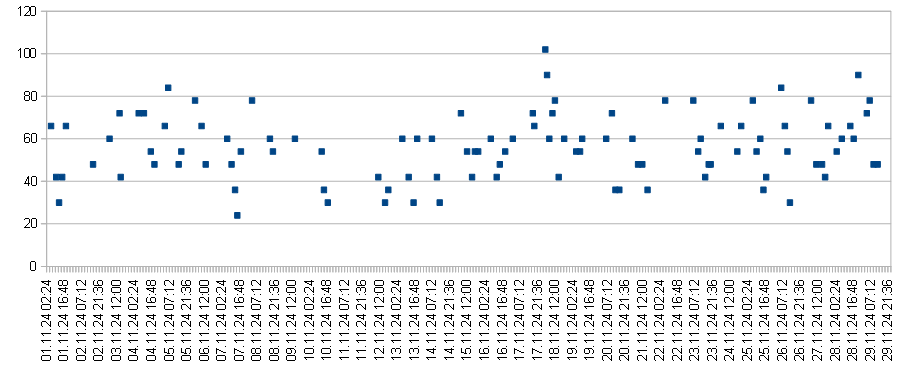
Figure 10 – The result with the calculated hourly numbers of meteor echoes by listening to the radio signals during November 2024.
Maximum Perseid activity was recorded on August 13 between 10h and 14h UT at 460–510 hourly signals. There is one observation with a level of about 600 signals on August 12 around 15h30m UT, but these data were not confirmed in the following hours. According to the IMO, the traditional Perseid maximum is at solar longitude 140 to 140.1 degrees (August 12 from 13h to 16h UT). Apparently, the fainter meteor maximum occurs a day after the traditional maximum of the shower.
In September we observed a weak monotonous increase in the level of radio signals with an average level of about 40. A weak peak around 10–11 September can be explained most likely by SPE (#0208), higher activity at the end of the month on 27–29 September by DSX (#0221) and KLE (#0212).
For the Draconids, there is one observation with a high level of activity on October 7 around 05h45m UT (84 signals per hour). The WGN journal reports an outburst of shower activity on the morning of October 8.
The broad Orionid maximum appears to include three peaks of shower activity (around 5h30m UT on October 21, between 01h – 07h UT on October 22, and 19h UT on October 22 – 06h UT on October 23).
November is a quiet month in terms of signals activity with an average of 50 signals per hour. The peak of the Leonids was recorded on November 18 at the interval 04h–06h UT with the level of 90–100 signals.
High Geminid activity occurred from December 13, 18h UT to December 14, 10h UT, which agrees well with the traditional shower peak of λʘ = 262.2° (= December 14, 01h UT)
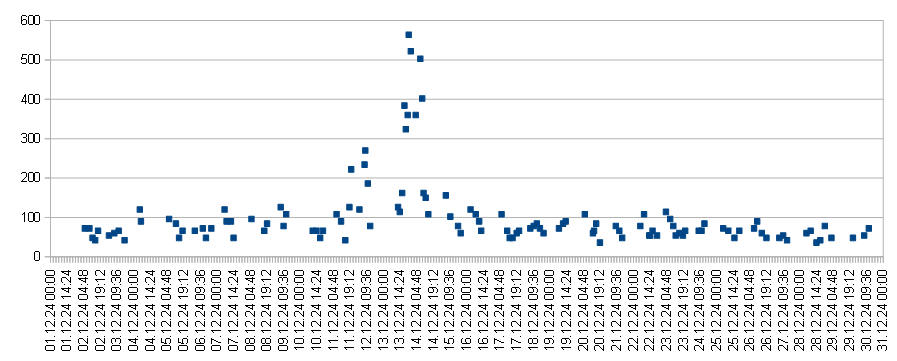
Figure 11 – The result with the calculated hourly numbers of meteor echoes by listening to the radio signals during December 2024.
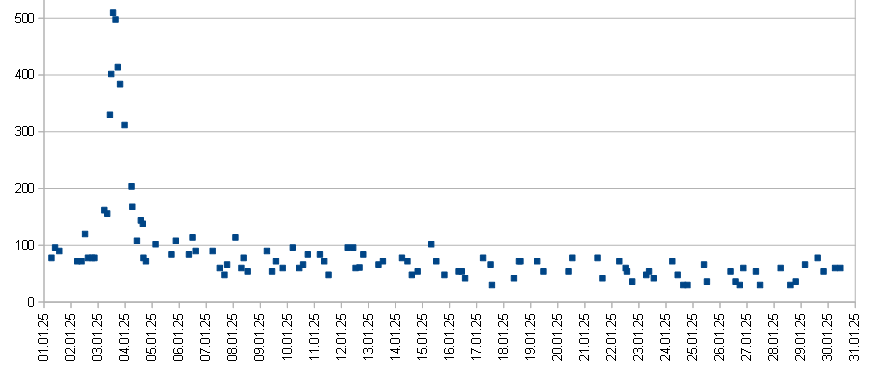
Figure 12 – The result with the calculated hourly numbers of meteor echoes by listening to the radio signals during January 2024.
3 Automatic detection of meteor signals on 88.6 MHz.
Figures 13–20 show the results of the automatic observations for August, December 2024 and January 2025. During the year, experiments were underway to increase the sensitivity of the Metan program in terms of meteor signal detection.
According to Vida et al. (2024), the outburst of the Draconids peaked with a ZHR of 15.7 ± 1.4 at solar longitude 195.08 ± 0.05 degrees (October 8, 2024 at 05h15m UT ± 1 hour). My automated observations confirm a small Draconid outburst on the morning of October 8 at 4h–5h UT.

Figure 13 – The result of automatic detection of meteor signals for August 2024 in the Metan program.
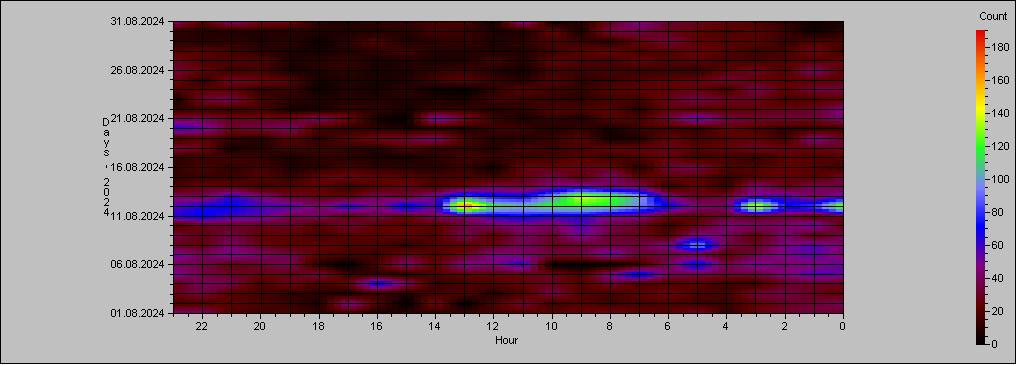
Figure 14 – Heatmap for radio meteor echo counts at 88.58 MHz for August 2024.
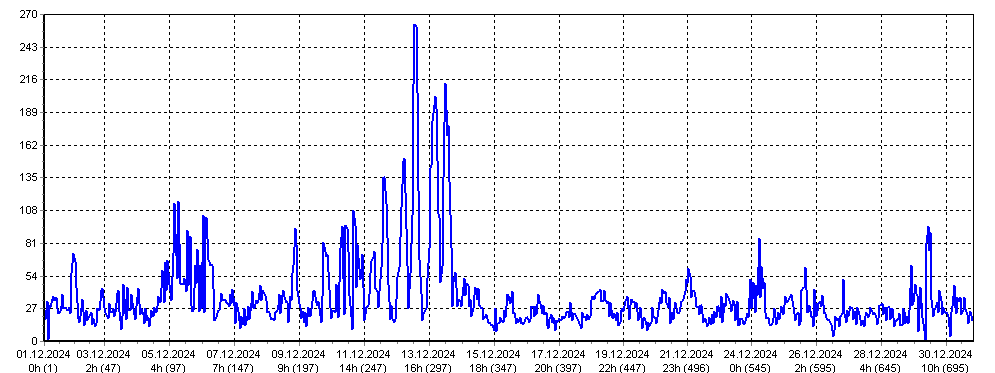
Figure 15 – The result of automatic detection of meteor signals for December 2024 in the Metan program.
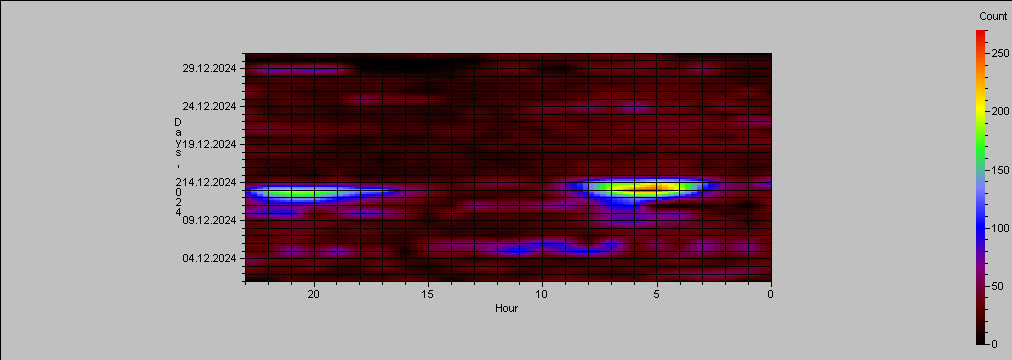
Figure 16 – Heatmap for radio meteor echo counts at 88.58 MHz for December 2024.
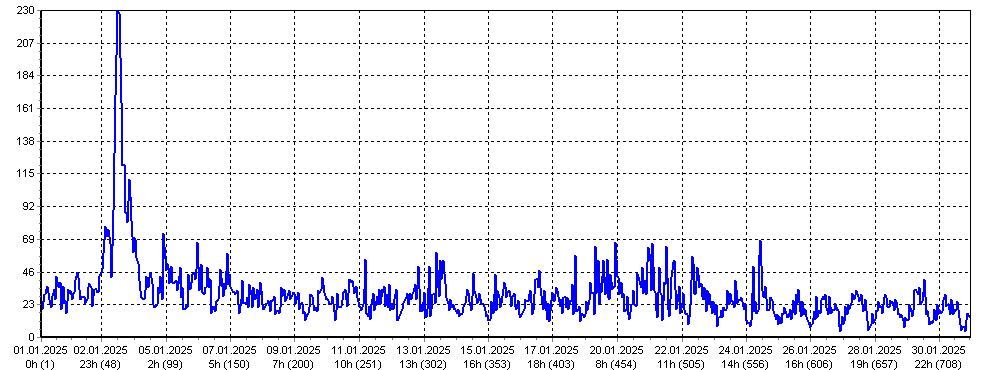
Figure 17 – The result of automatic detection of meteor signals for January 2025 in the Metan program.
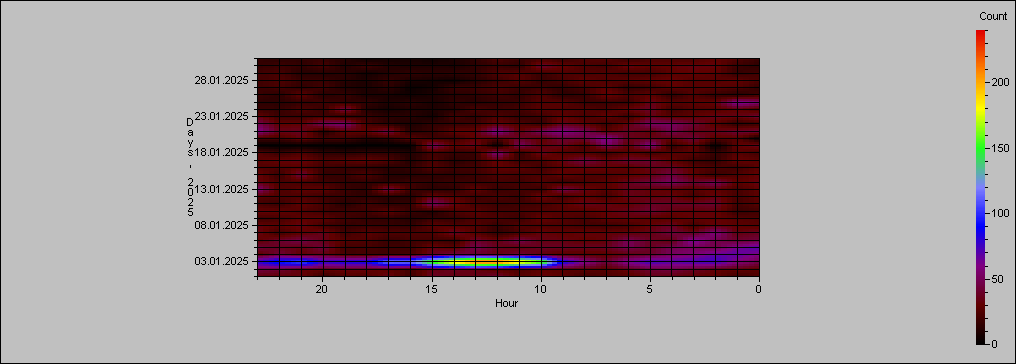
Figure 18 – Heatmap for radio meteor echo counts at 88.58 MHz for Januar 2025.
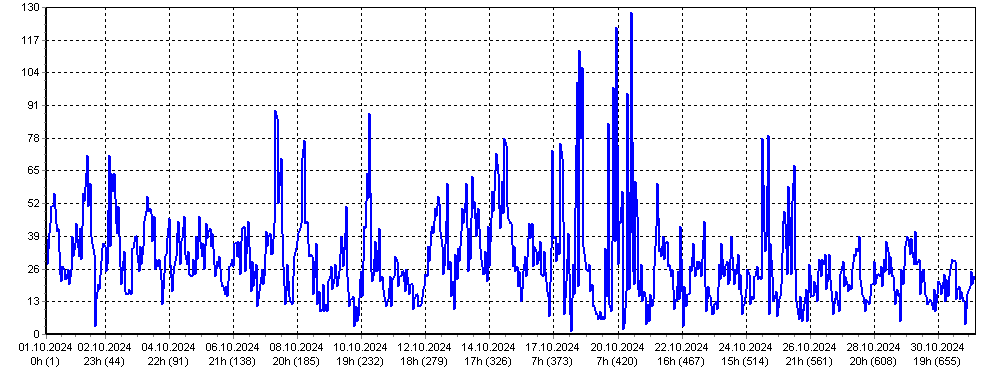
Figure 19 – The result of automatic detection of meteor signals for October 2024 in the Metan program.
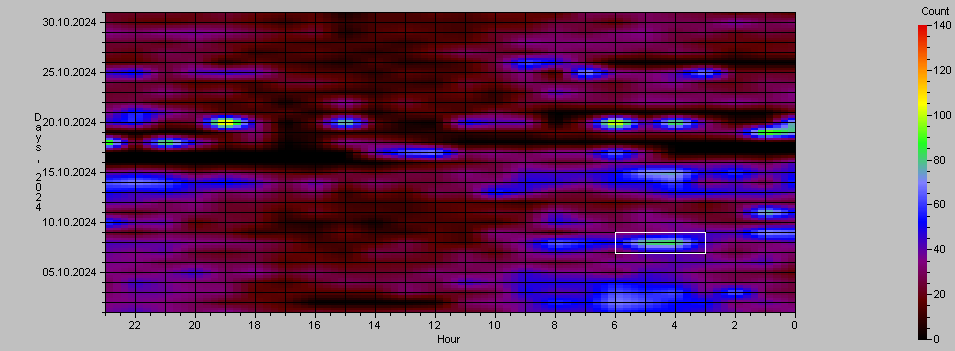
Figure 20 – Heatmap for radio meteor echo counts at 88.58 MHz for October 2024.
4 Conclusion
The method of counting the radio meteor echoes by listening is about 3 times more sensitive than the method using automatic detection of meteor echo signals with music or speech. Experiments are underway to increase the sensitivity of the Metan software for automatic detection of meteor signals. The automatic signal detection method is very suitable for monitoring the outburst activity of meteor streams. For my equipment, the limit for outburst detection is around ZHR 10–15. The radio listening method does not allow monitoring of outburst activity due to the small number of observation points during the day, the detection of increased activity by this method is random.
Acknowledgment
I would like to thank Sergey Dubrovsky for the software he developed for data analysis and processing of radio observations (software Rameda). I thank Carol from Poland for the Metan software. Thanks to Paul Roggemans for his help in the lay-out and the correction of this article.
References
Rendtel J. (2024). “Meteor Shower Calendar”. IMO.
Vida D., Egal A., Brown P., Campbell-Brown M., Cooke W. and Moser D. (2024). “2024 Draconid Meteor Outburst”. CBET 5456, Editor: Daniel W.E. Green.

